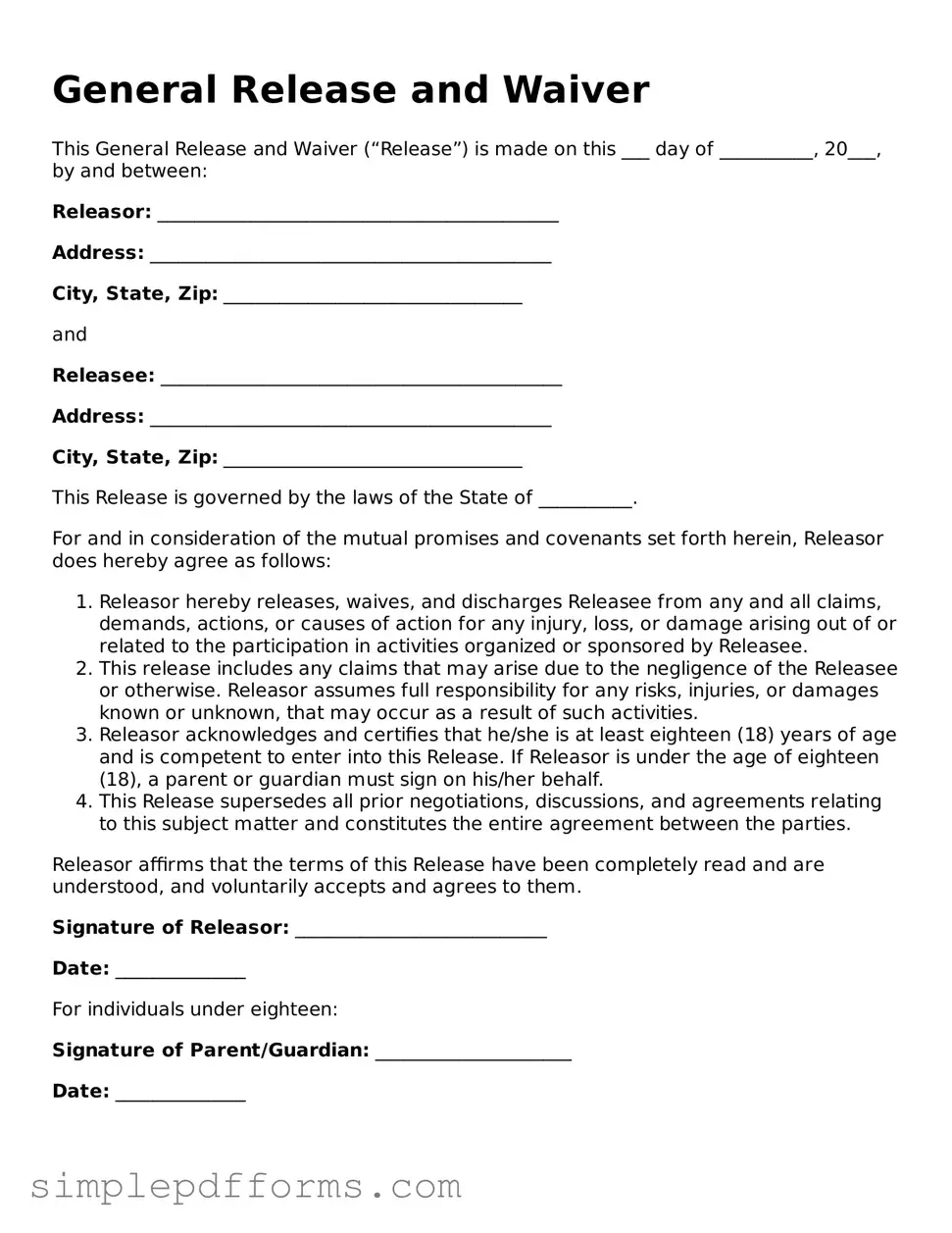General Release and Waiver
This General Release and Waiver (“Release”) is made on this ___ day of __________, 20___, by and between:
Releasor: ___________________________________________
Address: ___________________________________________
City, State, Zip: ________________________________
and
Releasee: ___________________________________________
Address: ___________________________________________
City, State, Zip: ________________________________
This Release is governed by the laws of the State of __________.
For and in consideration of the mutual promises and covenants set forth herein, Releasor does hereby agree as follows:
- Releasor hereby releases, waives, and discharges Releasee from any and all claims, demands, actions, or causes of action for any injury, loss, or damage arising out of or related to the participation in activities organized or sponsored by Releasee.
- This release includes any claims that may arise due to the negligence of the Releasee or otherwise. Releasor assumes full responsibility for any risks, injuries, or damages known or unknown, that may occur as a result of such activities.
- Releasor acknowledges and certifies that he/she is at least eighteen (18) years of age and is competent to enter into this Release. If Releasor is under the age of eighteen (18), a parent or guardian must sign on his/her behalf.
- This Release supersedes all prior negotiations, discussions, and agreements relating to this subject matter and constitutes the entire agreement between the parties.
Releasor affirms that the terms of this Release have been completely read and are understood, and voluntarily accepts and agrees to them.
Signature of Releasor: ___________________________
Date: ______________
For individuals under eighteen:
Signature of Parent/Guardian: _____________________
Date: ______________
